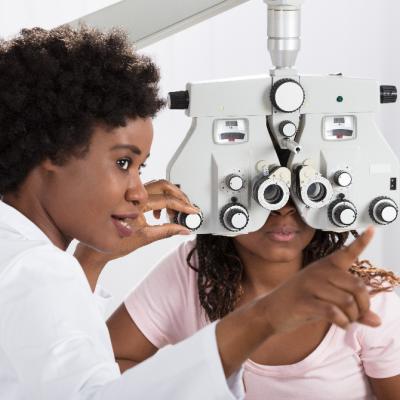- Empty cart.
- Continue Shopping
The Importance of Regular Eye Exams for Kids

As parents, we often prioritize our children’s health and well-being. However, one aspect of their health that can sometimes be overlooked is their vision. Regular eye exams for kids are not just about ensuring they can see clearly; they play a vital role in overall health and development.
1. Early Detection of Vision Problems
One of the primary reasons for regular eye exams in children is the early detection of vision problems. Many vision issues, such as nearsightedness (myopia), farsightedness (hyperopia), and astigmatism, can develop in childhood. When these problems are identified and corrected early, it can significantly impact a child’s ability to learn, read, and interact with their environment effectively.
2. Academic Success
Good vision is crucial for academic success. Children rely on their vision for reading, writing, and participating in classroom activities. Undiagnosed vision problems can lead to difficulties in school, including:
- Reading difficulties: Children with vision issues may struggle to see the board, focus on written material, or track lines of text while reading.
- Poor attention span: Squinting or straining to see can lead to fatigue and a shorter attention span, making it challenging for children to stay engaged in lessons.
- Learning delays: Vision problems can contribute to learning delays or difficulties in subjects that require visual concentration, such as math and reading.
3. Healthy Eye Development
The eyes continue to develop during childhood, and regular eye exams help ensure that this development progresses as it should. Detecting and treating issues early, such as lazy eye (amblyopia) or misaligned eyes (strabismus), can prevent long-term vision problems and complications.
4. Early Detection of Health Conditions
Eye exams can also detect underlying health conditions that may not initially seem related to vision. Some medical conditions, such as diabetes or high blood pressure, can have eye-related symptoms or complications. By identifying these issues early through an eye exam, appropriate medical care can be initiated promptly.
5. Prevention of Eye Strain and Discomfort
Kids today spend a significant amount of time looking at screens—computers, tablets, and smartphones. Prolonged screen time can lead to eye strain and discomfort, often referred to as computer vision syndrome. Regular eye exams can help identify any issues related to excessive screen time and provide recommendations for reducing eye strain.
6. Visual Skills Assessment
Eye exams for children go beyond just checking for the need for glasses. They also assess visual skills, such as eye tracking, focusing abilities, and depth perception. Problems with these skills can affect a child’s coordination, sports performance, and overall quality of life.
7. Parental Peace of Mind
Regular eye exams provide parents with peace of mind knowing that their child’s vision is being monitored and any issues are being addressed promptly. Early intervention can often prevent the progression of vision problems and minimize the impact on a child’s life.
When Should Kids Have Their First Eye Exam?
The American Optometric Association (AOA) recommends that children have their first comprehensive eye exam at 6 months of age, followed by exams at age 3 and just before they enter school (around age 5 or 6). After that, children should have eye exams every one to two years, or as recommended by their eye care professional.
In Conclusion, Regular eye exams for kids are not only about clear vision but also about overall health and well-being. These exams can detect vision problems, support academic success, ensure healthy eye development, and even identify underlying medical conditions. By prioritizing regular eye exams for your children, you can help them see the world clearly and thrive in all aspects of life.








